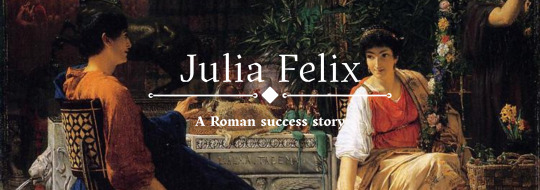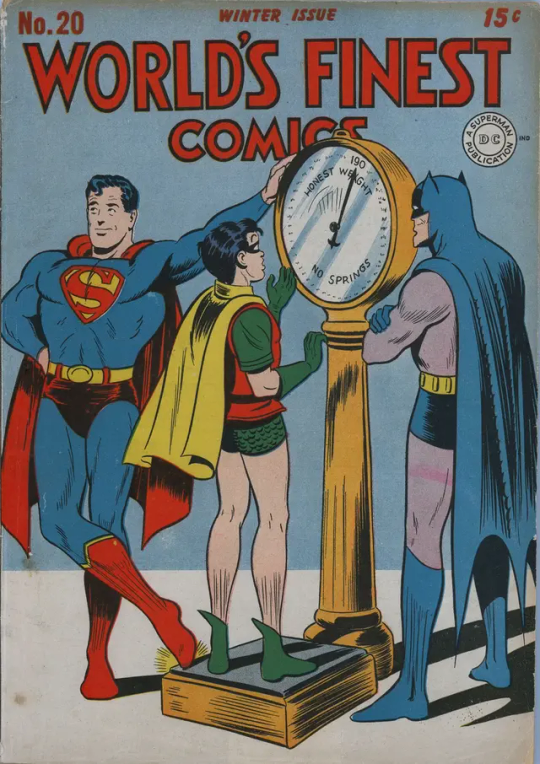#august 1952
Explore tagged Tumblr posts
Text

US Vogue August 15, 1952
Cherry Nelms wears a navy blue gabardine suit with a multi-pleated skirt and a small rounded jacket with a black velvet collar. By Ben Gaynes, in Miron wool gabardine. Faux pearl necklace, Richelieu.
Cherry Nelms porte un tailleur en gabardine bleu marine avec une jupe à plis multiples et une petite veste arrondie au col en velours noir. Par Ben Gaynes, en gabardine de laine Miron. Collier en fausses perles, Richelieu.
Photo Ted Croner vogue archive
#us vogue#august 1952#fashion 50s#fall/winter#automne/hiver#ben gaynes#miron wool#richelieu#cherry nelms#ted croner#vintage fashion#vintage vogue
43 notes
·
View notes
Text

Bill Randall - "Gay" - August 1955 Date Book Calendar Illustration - Kemper-Thomas Calendar Co. - American Pin-up Calendar Collection -
183 notes
·
View notes
Text

Sylvia Plath
29 notes
·
View notes
Text










The Snows of Kilimanjaro (1952) dir. Henry King
#the snows of kilimanjaro#1952#henry king#leon shamroy#gregory peck#susan hayward#ava gardner#hildegard knef#1950s#screencaps#august 2024#3.5/5
21 notes
·
View notes
Text

#indochina war#guerre d'indochine#viet nam#na san#1952#légion étrangère#légion#légionnaire#foreign legion#soldier#war#50's#france#french#auguste apel#history
3 notes
·
View notes
Text
The Phantom Stranger first appeared in his own title, cover date aug/Sept 1952. He was created by John Broome and Carmine Infantino. ("The Haunters From Beyond!", "When Dead Men Walk", "Goblin in the Bottle", "The House of Strange Secrets", The Phantom Stranger 1#, DC Comic Event)

#nerds yearbook#real life event#first appearance#comic book#dc comics#comic#phantom stranger#august#september#1952#john broome#carmine infantino#paranormal
5 notes
·
View notes
Text

0 notes
Photo

the restored version of this image They don't want you to see

Barred Spiral Galaxy NGC 2903
Credits: Almudena Alonso-Herrero, U. Hertfordshire, HST, ESA, NASA
#galaxies#my edits#aliens#silliness#the alien is from the Galaxy Science Fiction Magazine August 1952 cover
69 notes
·
View notes
Text

"Here’s what we know about Julia Felix: she lived in Pompeii from at least 62 CE. She was possibly illegitimate but was definitely not a member of the social and cultural elite. She worked for a living setting up and running a very interesting business and, by 79 CE, she had planned to shift her focus from managing a business to owning property. We know all these things because twentieth-century excavations at her business uncovered an advert, carved in stone and attached to the external wall of her huge building. It reads:
"To rent for the period of five years from the thirteenth day of next August to the thirteenth day of the sixth August, the Venus Bath fitted for the nogentium, shops with living quarters over the shops, apartments on the second floor located in the building of Julia Felix, daughter of Spurius. At the end of five years, the agreement is terminated."
This find illuminated the building it was attached to, bringing what otherwise looked like a very large anonymous domestic house into dazzling focus. With this description of the purpose of each room written by the owner herself, archaeologists and historians could see the site through a whole new lens and they realised that they had discovered a Roman entertainment space for the working middle classes. It is, so far, a completely unique find and it is magnificent. It offers us, as modern viewers, two amazing things: a little glimpse into the lives of the commercial classes of the Roman Empire who are so often completely and utterly invisible, and a brutal reminder that so much of what we ‘know’ about Roman women in the Roman world comes from rules concerning only the most elite.
We’ll do that second part first, because it’s the least fun. Roman written and legal sources are pretty universal in their agreement that although women could own property, they could not control it; they had no legal rights, could not make contracts and were to be treated as minors by the legal system for their entire lives. In order to buy or sell property women required a male guardian to oversee and sign off on any transactions. This is a basic truism of women in the Roman Empire, repeated ad nauseum by sources both ancient and modern including me, and it is undermined by Julia Felix’s rental notice.
The rental ad makes it pretty clear that Julia Felix is the owner-operator of a business complex including public baths, shops and apartments (there’s more too, as we’ll see), and she doesn’t seem to require anyone else to help her rent it out. She names her father – sort of; ‘Spurius’ might just mean that she is illegitimate – but this is effectively a surname, a personal identifier to differentiate her from other Julia Felixes in the area. It doesn’t mean her father was involved. Furthermore, the use of her father’s name as an identifier suggests that Julia didn’t have a husband and was either unmarried or widowed in 79 CE. The strong implication of her advert is that Julia Felix was an independent lady, a honey making money and a momma profiting dollars who could truthfully throw her hands up to Destiny’s Child.

We will never know if Julia escaped the flames and choking ash of 79 CE, fleeing as it swallowed her business and her home, but one discovery, made on 28 January 1952, suggests that she didn’t. The archaeologists, led by Amedeo Maiuri, uncovered on that day the skeleton of a woman who had fallen while running across the garden during the disaster. It’s clear this fallen woman was well off, because she was wearing a lot of gold jewellery. She carried four gold half-hoop earrings and wore four gold rings. Two of these rings were particularly expensive; both contained a red carnelian gem, one carved with a figure of Mercury, the other with an eagle. Around her neck she wore a necklace of gold filigree, dotted with ten pearls and hung with a green pendant. Someone stole both the necklace and earrings from the Pompeii Antiquarium in 1975 and no one, somehow, had ever bothered to photograph them so all we have are descriptions but the rings that survive are fine and expensive. The woman who wore them – was wearing them when she died – had real money to buy these objects and the woman who wore them did'nt leave Pompei in time.
Moreover, when she was found it was clear that at the moment of her death she was heading not towards the street or towards safety, but towards the shrine to Isis in the garden where all the most valuable possessions were kept. The valuable possessions that Julia Felix grafted for and maybe couldn’t bear to leave behind. There’s no way to tell whether this skeleton is Julia Felix, whether these bones once stood and looked at the plots of land Julia bought and made plans, or whether they belong to a looter or a chancer or someone just caught out. But it’s nice to pretend that Julia Felix, who shaped the city’s roads around her dream and offered respite and luxury to workers and made a tonne of money doing it, died and was buried with the place that still bears her name."
A Rome of One's Own: The Forgotten Women of the Roman Empire, Emma Southon
#julia felix#historyedit#history#women in history#ancient rome#pompei#businesswomen#italy#italian history#roman history#roman empire#1st century#historyblr#historical figures
767 notes
·
View notes
Text

Sylvia Plath, in a diary entry dated August 8th 1952 featured in The Unabridged Journals of Sylvia Plath
3K notes
·
View notes
Text

US Vogue August 15, 1952
A model in an evening gown of pale blue satin with a length of forest green toile tied like a glorified order ribbon. By Ceil Chapman, in Du Pont acetate.
Un modèle dans une robe du soir de satin bleu pâle avec une longueur de faille vert forêt nouée comme un ruban d'ordre glorifié. Par Ceil Chapman, en acétate Du Pont.
Photo Richard Rutledge vogue archive
#us vogue#august 1952#fashion 50s#fall/winter#automne/hiver#ready to wear#prêt à porter#ceil chapman#richard rutledge#vintage vogue#vintage fashion#DuPont
34 notes
·
View notes
Text

Earl Moran - "No Infringement" - August Girls of 1952 Calendar Illustration - Brown & Bigelow Calendar Co. - American Pin-up Calendar Collection
154 notes
·
View notes
Text

Sylvia Plath
16 notes
·
View notes
Text


Marilyn Monroe and Ray Anthony at his party in Hollywood, August 1952.
#marilyn monroe#old hollywood#vintage#old hollywood glamour#history#beauty#1950s#retro#50s#photography#ray anthony
516 notes
·
View notes
Text




Cover artists: Jack Burnley - #20, 23 & 27 (both with Charles Paris); Win Mortimer - #54.
I love these early World's Finest Comics covers with Superman and Robin messing with each other (sometimes with an assist from Batman).
This was the period before Superman and Batman and Robin actually teamed-up inside the book, which was an anthology title, but they shared every single cover. The covers usually showed the three pals having fun playing baseball, or basketball, skiing, going to the swimming hole, or other activities boys liked to do.
Inside Superman and Batman (with Robin) had solo stories, along with whatever other characters were featured.
It wasn't until Superman (vol. 1 ) #76 (May, 1952) that Superman and Batman actually met in a comic book story, and accidentally learned each other's secret identity at the same time.
And they wouldn't begin teaming-up in World's Finest Comics for another two years, in #71 (July-August, 1954). As a cost saving measure, the book's page count was cut, along with the anthology format. The editors decided to put their most popular characters together in the one story there was room for, and a tradition was born. The Superman-Batman team-ups would, except for a short period around issue #200, be the format of the book until it was cancelled in 1986 with issue #323.
#World's Finest Comics#Superman#Batman#Robin#DC Comics#Golden Age comics#Jack Burnley#Charles Paris#Win Mortimer.
637 notes
·
View notes
Text

Philippe Vandenberg (Belgian, 1952-2009), Untitled, 18 August 1991. Indian ink, charcoal and collage on paper, 110 x 73 cm.
141 notes
·
View notes